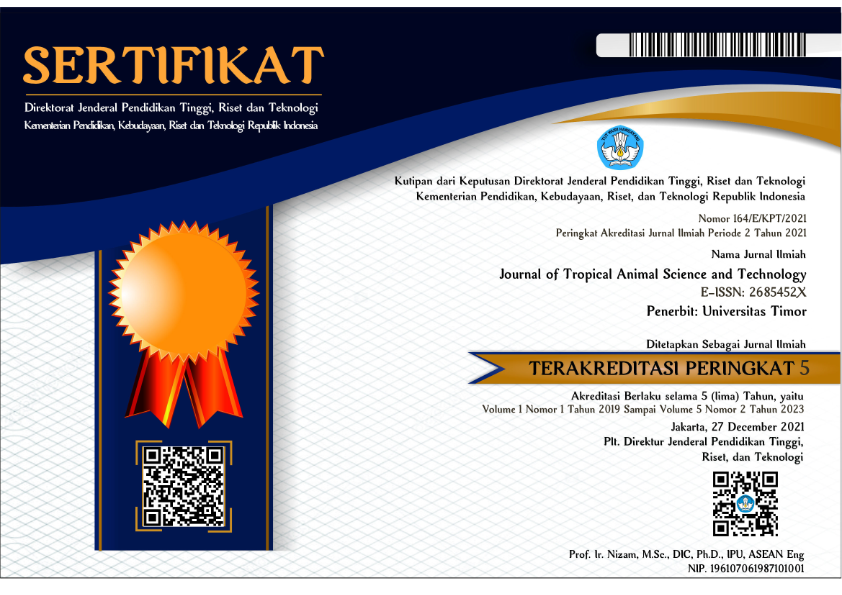The Estimate of Repitability of Performances at Birth and Weaning Age of Duroc Crossbred Sows
DOI:
https://doi.org/10.32938/jtast.v4i1.2185Keywords:
Repitability, Litter size, Weaning rate, Birth weight and weaning weightAbstract
The aims of this study were to determine the average and standard deviation and to estimate repitability coefficients of production at birth and weaning characters of duroc crossbred sows. The study was carried out in two breeding farms namely the Instalation of Pig Breeding, village of Tarus, Kupang Regency and the Manise Pig Farm, Village of Oetete, Kupang City, East Nusa Tenggara (NTT). Materials used duroc crossbred sows ( 15 heads ) which born and weaned piglets during the study periode. All sows was mated artivicialy with boars of duroc crossbred. Variables were liter size, weaning rate, birth weight and weaning weight. Analysis of statistical description was used to determine the average and deviation standard of liter size, weaning rate, birth and weaning weights. Effects between paritas was analysed using t-test and the interclass correlation was used to calculate the coefficient of repitability. Results showed that duroc crossbred sows had the average and deviation standard for the first and second liter size 9.87±1.80 head and 10.67±2.58 head; for the first and second birth weight 1.30±0.26 kg and 1.47±0.47 kg, for the first and second weaning weight 6.01±0.49 kg and 6.47±0.61 kg .and for the first and second weaning rate 8.20±1.78 head and 8.53±2.23 head; respectively. The average of litter size, birth weight, weaning weight and weaning rate between the first and second parity was no difference (P > 0,05). The coefficients of repeatabitily for characters of liter size, birth weight, weaning weight and weaning rate were 0.48; 0.30; 0.46 and 0,52; respectively. In conclution, the coefficients of repeatabily of litter size, birth weight and weaning weight from duroc crossbred sows were medium and that for weaning rate was high value and the performance of characters between the first and second parity were relatively same.























